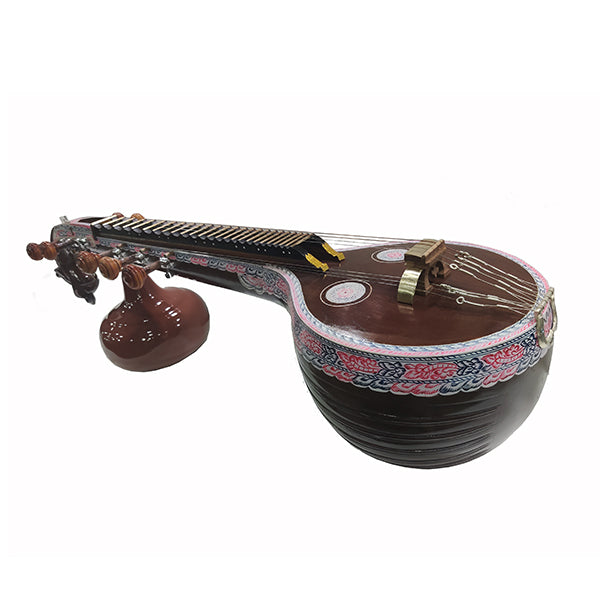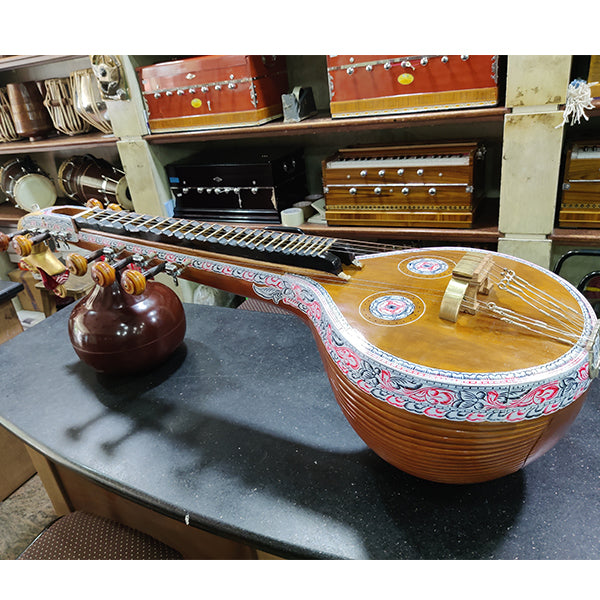Payment & Security

Description
Ekanda Veena is made from a Single log of wood.The tonal quality of the instrument is much better than the joint veenas. The unique hollow, scalloped fret board is known as the dandi and contains 24 frets, or mettu, often made from gunmetal, stainless steel or bronze.
The seven strings are of steel manufacture. The three tala pakarekku or talam are the rhythm and drone strings which are fashioned as subsidiary strings tuned to the tonic, upper tonic and fifth. These are attached to three pegs on the side of the neck that reside on a separate, curving bridge placed aside the main bridge, and are closest to the player's body when held. The other four (main) strings, the sarani, are tuned to the fifth and tonic in two octaves The four main strings ascend into and are attached to the four pegs, the birdai, in the peg box. The meru is the upper bridge which begins where the fingerboard ends, on which the peg box resides before its neck curves back toward the player to end in a carved dragon's head---the yali.
The main resonator, or kudam, is at the end of the fingerboard. It is made of hollowed-out jackwood or fiberglass. The strings descend over the resonator in the lower portion, passing over two sound holes, or nada randhra, carved into the kudam. The kudirai is the bridge over which the strings are positioned before they end in the fine-tuning langar adjustment. The langar are tied at the bottom to the naga pasha at the end of the kudam. The extra resonator, the surakkai or sarrokai, is made from tin or a gourd and hangs below the meru.
The Instrument includes the following Melam cover,velvet Cover,Wooden Plywood box for transportation,Vertical Folding Stand,Veena Strings (1 set) & Veena Clips


